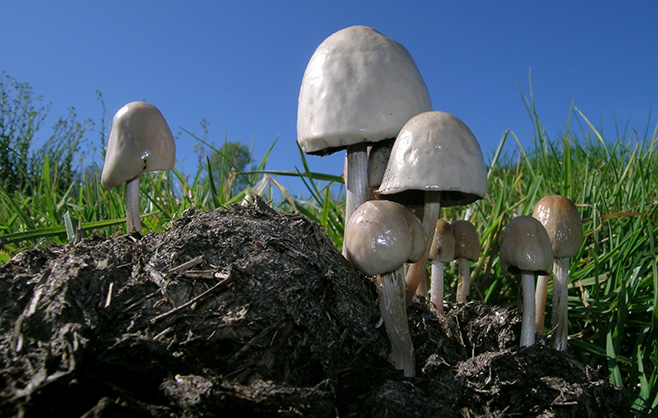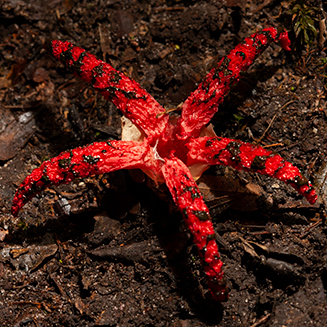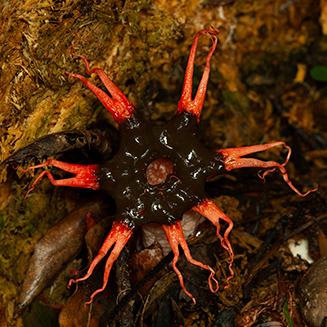|
Fungi (including mushrooms, truffles, puff-balls, lichens [part], yeasts, molds [part], rust, smut)
Life
 |
|
Mushrooms on cow pat.[photo Hamish Robertson ©] |
 |
 |
|
Clathrus archeri (Devil's fingers) on Outeniqua Hiking Trail, 30 December 2008.[photo Hamish Robertson] |
Aseroe rubra (Anemone stinkhorn fungus), Outeniqua Hiking Trail, 29 December 2008.[photo
Hamish Robertson] |
Fungi are primarily saprophytes, i.e. they live on dead or decaying organic matter, and hence they are vitally important in the cycling of nutrients in ecosystems. People tend to think of mushrooms when they think of fungi but fungi are far more diverse than this, including many species that are parasitic or commensal in and on other organisms - the most familiar example of fungal parasites are those in the genus Candida - most people have Candida albicans living in them - which under certain physiological conditions can reach pathogenic levels, in a condition called candidiasis or thrush (not to be confused with birds of that name - thrushes). Another genus of inconspicuous fungus of enormous significance is Aspergillus, which lives on plants and plant products and which produces aflatoxins that are highly toxic to people, particularly children. Aflatoxins are associated particularly with food that has been poorly stored, peanuts being the most common example.
Certain species of fungi are used in producing foods and drinks: yeasts in the genus Saccharomyces turn sugar into alcohol and are used for producing wine, spirits and beer; they are also used for making bread rise. Penicillium roqueforti is used for producing various types of blue cheese. The chemicals produced by fungi have been critically important in the pharmaceutical industry, with the first antibiotic, penicillin, produced from the mold species Penicillium chrysogenum.
There is currently no thorough coverage of Fungi in Biodiversity Explorer, but the links below are useful resources to start from.
Links
|
